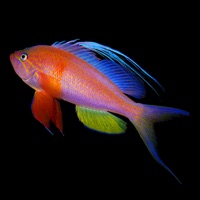If you're looking to Download Fishes on your Chromebook laptop Then read the following guideline.
An identification guide for the shore-fish fauna of the Caribbean and adjacent areas. This App is the second of a set of 2 portable identification guides for Apple touch-screen devices that will cover the shore-fish faunas of the tropical American marine regions on both sides of the central American Isthmus: the Tropical Eastern Pacific, the Greater Caribbean (Caribbean and adjacent areas).
This stand-alone App, which was adapted from the 2012 website Shorefishes of the Greater Caribbean: online information system (www.stri.org/sfgc), works independently of the internet.
• Complete English and Spanish interfaces. Connect to the Spanish interface by setting Spanish in the language preference of your device.
• Covers 1,693 species, with over 8,200 images to help identify them. Users can select to work with either the entire fauna, or with the Diver Group, a subset of 919 species that could be found within SCUBA diving depths on or adjacent to reefs in different parts of the region.
• A page for each species includes a detailed description (with information on its form, color, size, habitat and depth range), 1 or more species images (primarily photographs), key-features that distinguish it from similar species, a link to a page displaying similar species, and a map of its regional range.
• Browse among alphabetic lists of species and species-within-families, changing name-sorting between scientific and common (first or last) names.
• A search engine uses any combination of generic common names, location, habitat, and fish features (shape, color pattern and colors) to identify fishes.
• A glossary of scientific terms is linked to each species page.
• The notebook module allows (1) review of recently visited species pages and (2) construction of lists that record observations about fishes. New lists can be assembled from scratch or by making blank copies of existing lists. Lists are organized in folders, and are downloadable by email.
• The iPad version includes glossary images, and high resolution range maps with dots indicating site records.
• New for this version: option to work with either the entire fauna or a diver subgroup; 94 more species and almost 50% more images; habitat added to the fish ID search engine.

















